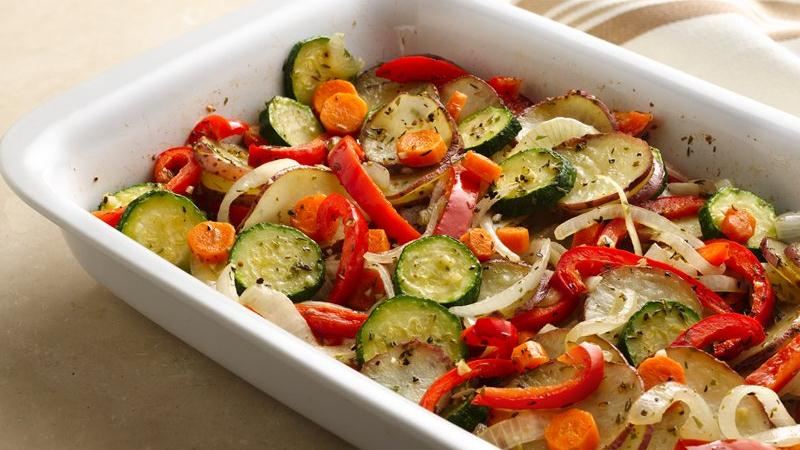source:- google.com.pk
The non-biological definition of a vegetable is
largely based on culinary and cultural tradition. Apart from vegetables, other
main types of plant food are fruits, grains and nuts. Vegetables are most often
consumed as salads or cooked in savory or salty dishes, while culinary fruits
are usually sweet and used for desserts, but it is not the universal rule.
Therefore, the division is somewhat arbitrary, based on cultural views. For
example, some people consider mushrooms to be vegetables even though they are
not biologically plants, while others consider them a separate food category;
some cultures group potatoes with cereal products such as noodles or rice,
while most English speakers would consider them vegetables.
Some vegetables can be consumed raw, while some,
such as cassava, must be cooked to destroy certain natural toxins or microbes
in order to be edible. A number of processed food items available on the market
contain vegetable ingredients and can be referred to as "vegetable
derived" products. These products may or may not maintain the nutritional
integrity of the vegetable used to produce them.
Dietary Recommendations
The USDA Dietary Guidelines for Americans
recommends consuming 3 to 5 servings of vegetables daily. This recommendation
can vary based on age and gender, and is determined based upon standard portion
sizes typically consumed, as well as general nutritional content. For most
vegetables, one serving is equal to 1/2 cup and can be eaten raw or cooked. For
leafy greens, such as lettuce and spinach, a single serving is typically 1 cup.
Serving sizes for vegetable-derived products have not been definitively
determined, but usually follow the 1/2 cup standard. Examples of
vegetable-derived products subject to this standard are ketchup, pizza sauce,
and tomato paste. Currently, there is no specific standard for measuring a
vegetable serving in regards to its nutrient content, since different
vegetables contain a wide variety of nutrients.
International dietary guidelines are similar to
the ones established by the USDA. Japan, for example, recommends the
consumption of 5 to 6 servings of vegetables daily. French dietary guidelines
follow similar guidelines and set the daily goal at 5 servings.
Storage
Proper post-harvest storage aimed at extending
and ensuring shelf life is best effected by efficient cold chain application.
All vegetables benefit from proper post harvest care.
Many root and non-root vegetables that grow
underground can be stored through winter in a root cellar or other similarly
cool, dark, and dry place to prevent the growth of mold, greening and
sprouting. Care should be taken in understanding the properties and
vulnerabilities of the particular roots to be stored. These vegetables can last
through to early spring and be nearly as nutritious as when fresh.
During storage, leafy vegetables lose moisture,
and the vitamin C in them degrades rapidly. They should be stored for as short
a time as possible in a cool place, in a sealed container or a plastic bag.
Safety
For food safety, the CDC recommends proper fruit
handling and preparation to reduce the risk of food contamination and foodborne
illness. Fresh fruits and vegetables should be carefully selected. At the
store, they should not be damaged or bruised and pre-cut pieces should be
refrigerated or surrounded by ice. All fruits and vegetables should be rinsed
before eating. This recommendation also applies to produce with rinds or skins
that are not eaten. It should be done just before preparing or eating to avoid
premature spoilage. Fruits and vegetables should be kept separate from raw
foods like meat, poultry, and seafood, as well as any cooking utensils or
surfaces that may have come into contact with them (e.g. cutting boards).
Fruits and vegetables, if they are not going to be cooked, should be thrown
away if they have touched raw meat, poultry, seafood or eggs. All cut, peeled, or
cooked fruits and vegetables should be refrigerated within 2 hours. After a
certain time, harmful bacteria may grow on them and increase the risk of
foodborne illness.
Healthy Vegetable Recipes Healthy Recipes for Kids for Weight Loss Tumblr for Two for Lunch for Christmas to Lose Weight with Ground Beef
Healthy Vegetable Recipes Healthy Recipes for Kids for Weight Loss Tumblr for Two for Lunch for Christmas to Lose Weight with Ground Beef
Healthy Vegetable Recipes Healthy Recipes for Kids for Weight Loss Tumblr for Two for Lunch for Christmas to Lose Weight with Ground Beef
Healthy Vegetable Recipes Healthy Recipes for Kids for Weight Loss Tumblr for Two for Lunch for Christmas to Lose Weight with Ground Beef
Healthy Vegetable Recipes Healthy Recipes for Kids for Weight Loss Tumblr for Two for Lunch for Christmas to Lose Weight with Ground Beef
Healthy Vegetable Recipes Healthy Recipes for Kids for Weight Loss Tumblr for Two for Lunch for Christmas to Lose Weight with Ground Beef
Healthy Vegetable Recipes Healthy Recipes for Kids for Weight Loss Tumblr for Two for Lunch for Christmas to Lose Weight with Ground Beef
Healthy Vegetable Recipes Healthy Recipes for Kids for Weight Loss Tumblr for Two for Lunch for Christmas to Lose Weight with Ground Beef
Healthy Vegetable Recipes Healthy Recipes for Kids for Weight Loss Tumblr for Two for Lunch for Christmas to Lose Weight with Ground Beef
Healthy Vegetable Recipes Healthy Recipes for Kids for Weight Loss Tumblr for Two for Lunch for Christmas to Lose Weight with Ground Beef
Healthy Vegetable Recipes Healthy Recipes for Kids for Weight Loss Tumblr for Two for Lunch for Christmas to Lose Weight with Ground Beef









No comments:
Post a Comment